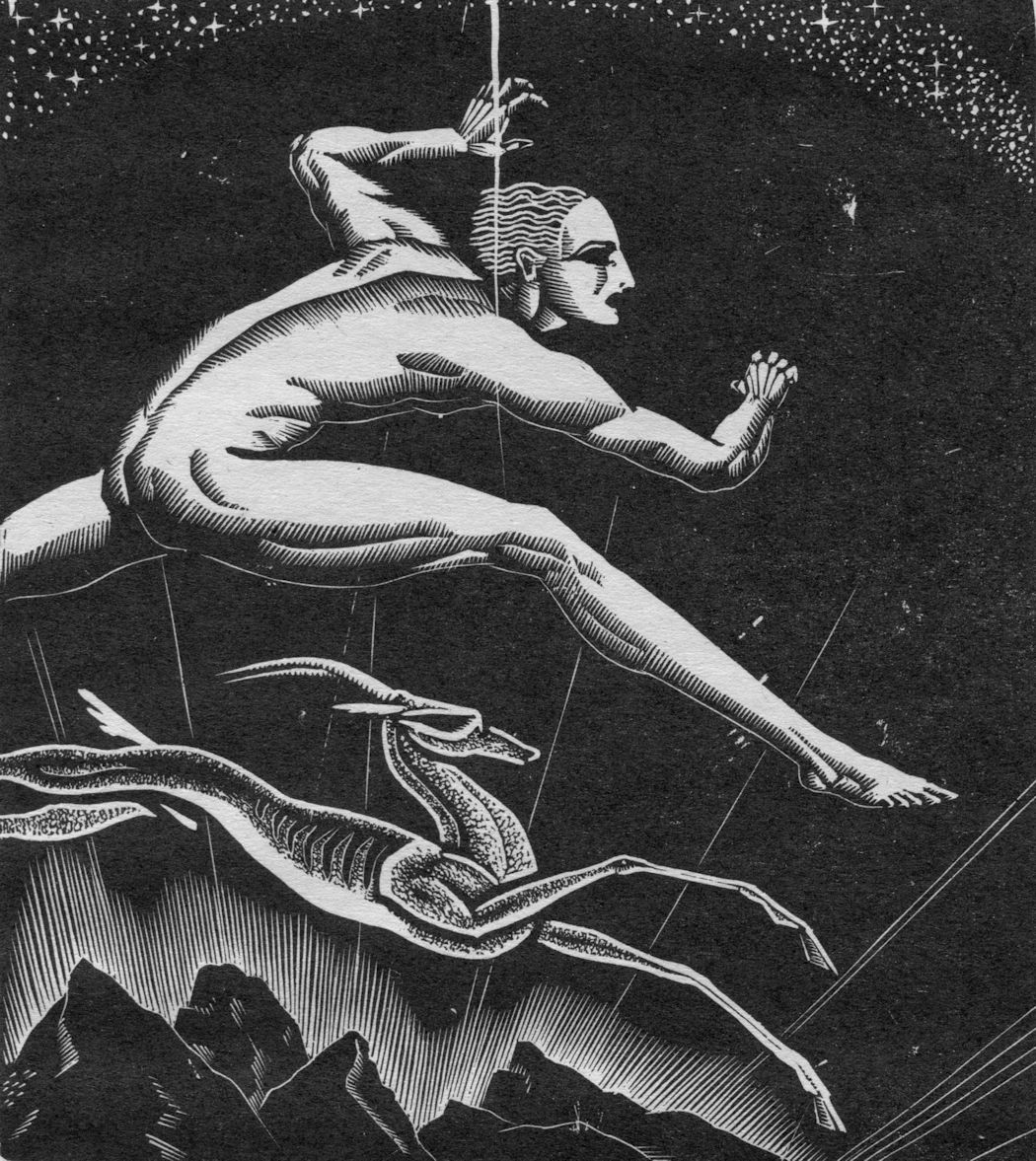John French Sloan (1871 - 1951)
Realist painter and printmaker John French Sloan was born in Lock Haven, Pennsylvania and moved to Philadelphia, where he sold his first etchings after teaching himself the technique. His formal training was limited by the demands of work as a freelance artist and newspaper artist. Sloan took classes at the Pennsylvania Academy of the Fine Arts with Thomas Anschutz. At the urging of friends, he began painting and became one of “Eight”, a group of like-minded artists who formed the nucleus of the Ashcan School. At this time, he also began his long career as a book illustrator.
His series of ten etchings titled New York City Life aroused controversy because of the then-prevailing disdain for social realism, and Sloan found it difficult to sell his work. Several major exhibitions during the subsequent years engendered popularity for the work of Sloan and his friends. In 1912, he became the art editor of The Masses. During the First World War, Sloan summered at Gloucester, Massachusetts and in 1916 began teaching at the Art Students League, an affiliation that lasted until 1932 and was briefly revived from 1935 – 1938.
From 1920, Sloan summered in Santa Fe, New Mexico, where he and his wife were active in local cultural and social activities. During these years, his painting style evolved toward Post-impressionism which, with its deliberate distortions of perspective, puzzled those who prized his earlier realistic style. In 1936 Sloan exhibited one hundred etchings at the Whitney Museum. In1937, the Whitney Museum exhibition New York Realists: 1900-1914 featured the early city scenes for which he was known and praised. John Sloan died at Hanover, New Hampshire.
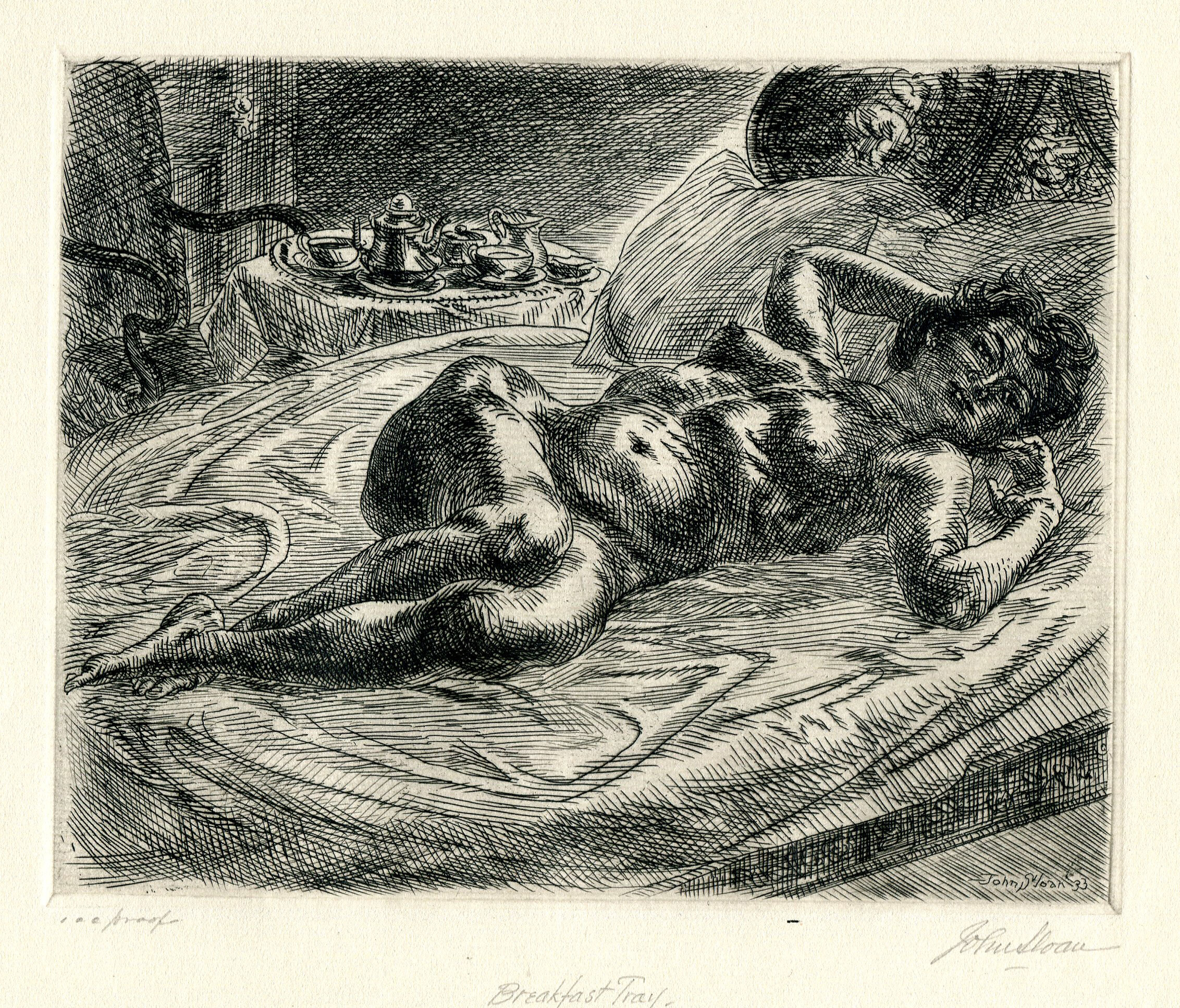
Breakfast Tray
Etching on cream laid paper, 1933; edition of 100. Image size 6¾” x 5-3/8”; sheet size 12½” x 9½”. Annotated “100 proofs”, titled, and signed by Sloan in pencil in the lower margin. A fine impression in overall fine condition, with wrinkling at the upper left edge and left side of the sheet, well away from the image. Morse 263.
$900
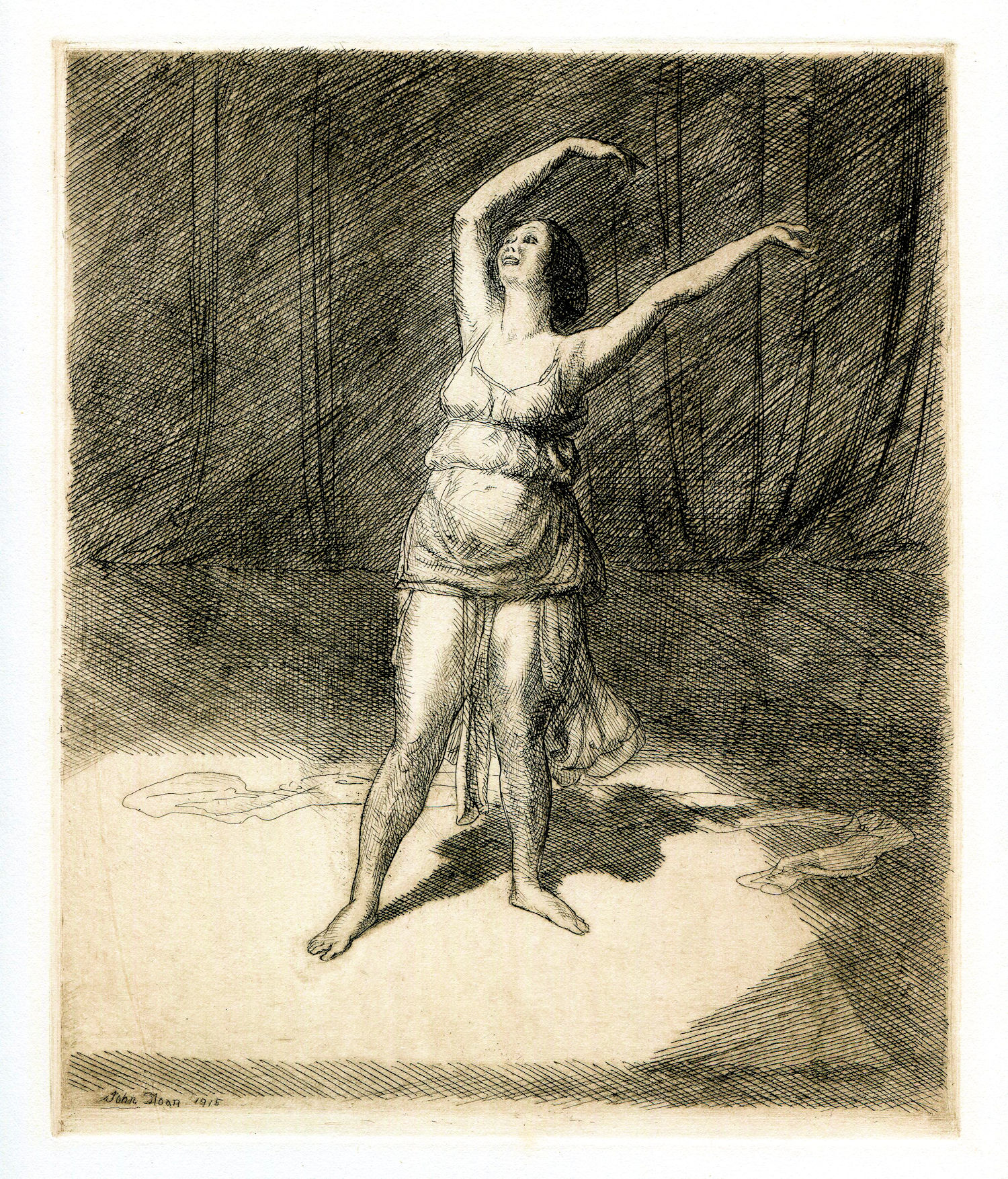
Isadora Duncan
Etching on wove paper in reddish brown ink, 1915. Signed and dated in the plate. Morse records twenty-six states of this image; we believe this to be the twenty-fifth state despite the annotation “XXIII” at the lower edge of the sheet. Overall edition 100 proofs. Beautifully inked and printed. Image size 7-5/16” x 8-7/8”; sheet size 9¾” x 12-11/16”. Overall fine condition, except for damage to the bottom of the sheet in the form of a 1” square tear, well away from the image and stabilized with archival tape verso.
$3,500
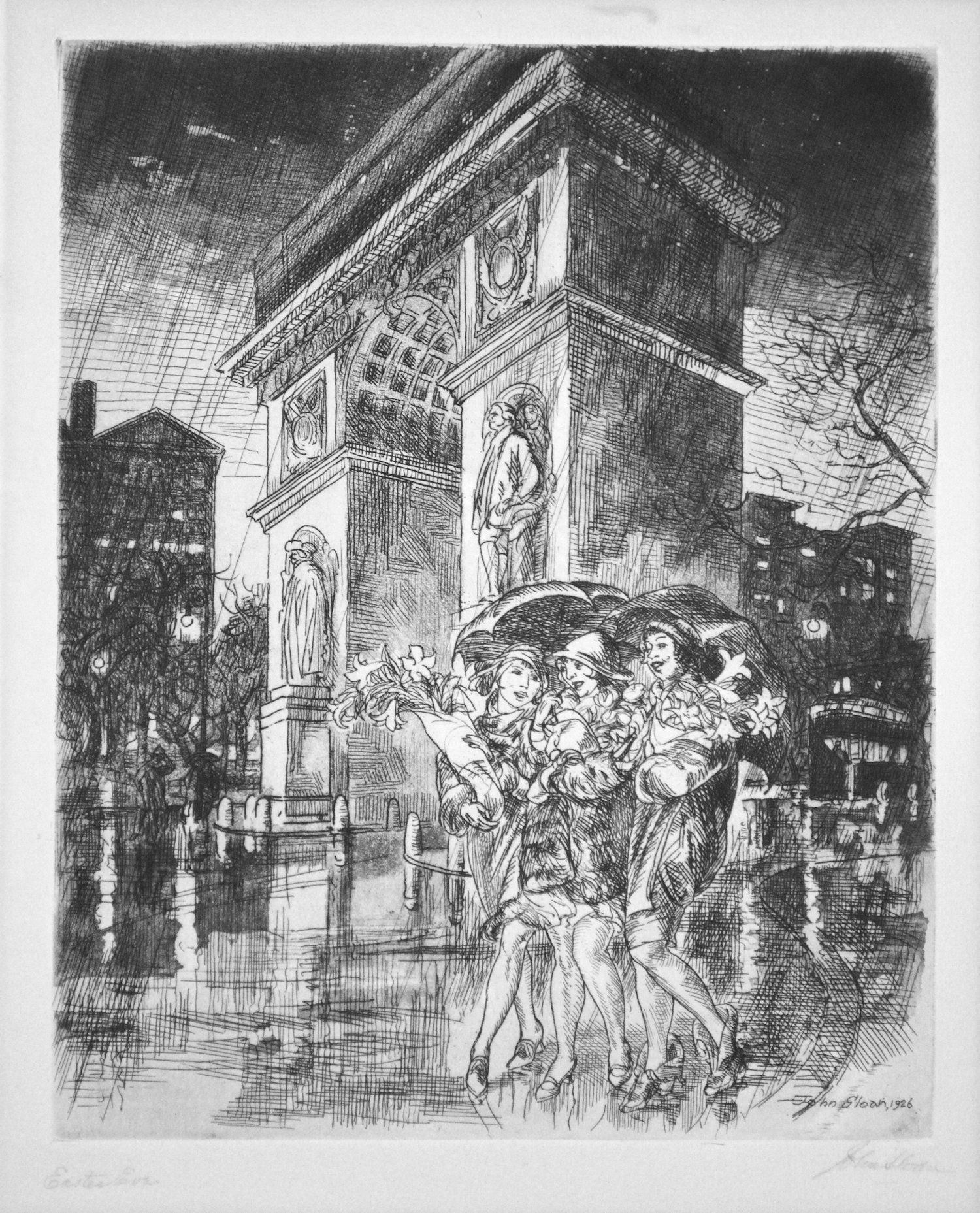
Easter Eve, Washington Square
Etching and aquatint, 1926; edition of 60. Image size 7-7/8” x 9-3/4”; sheet size 12-5/8” x 15-7/8”. Very good. Strong impression on evenly and moderately toned sheet with minor staining well away from the image. Matted and framed using archival quality materials.
$5,500
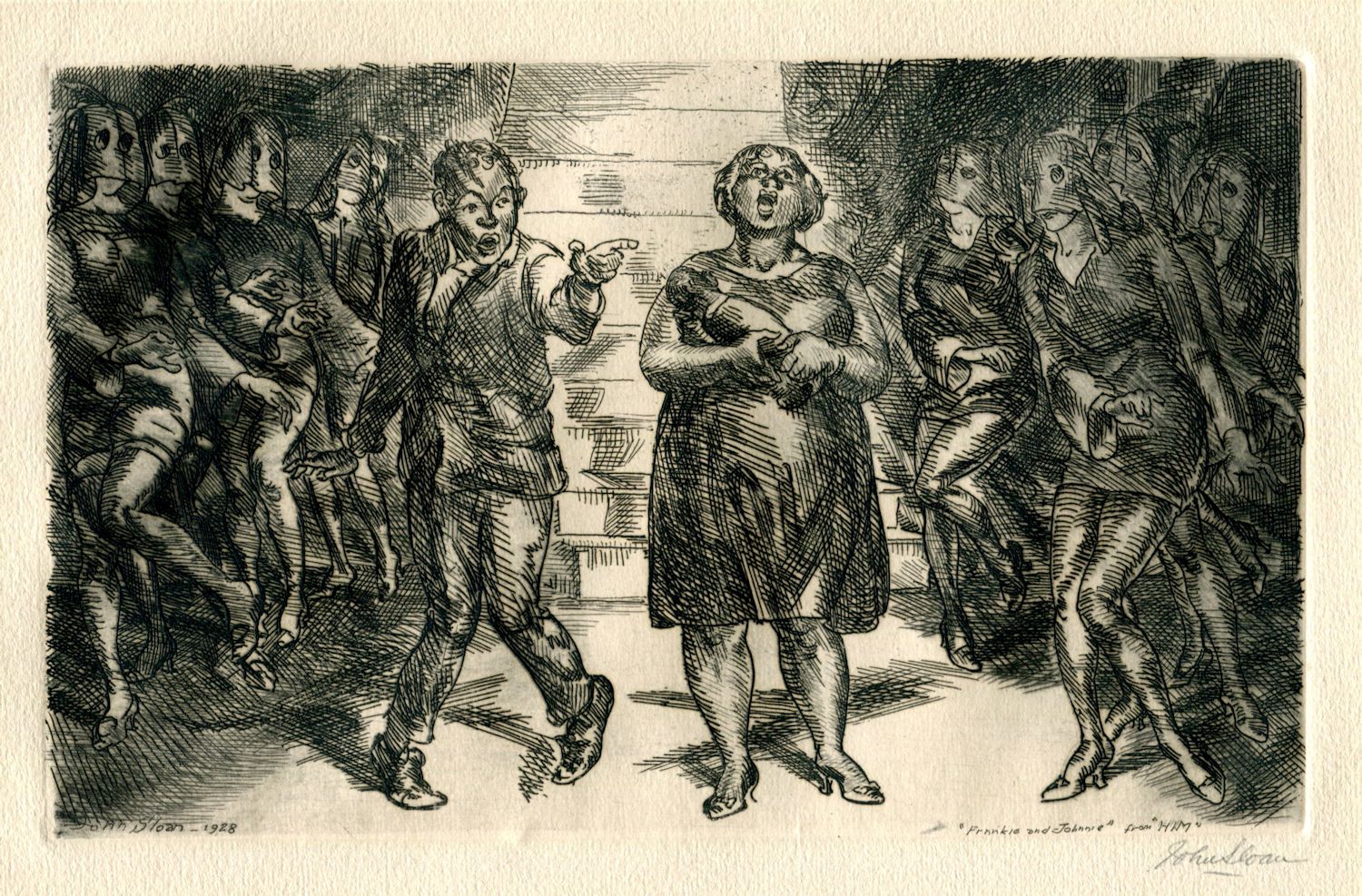
Frankie and Johnnie
Etching, 1928; edition of 100. Image size 7-13/16” x 4-7/8”; sheet size 12½” x 9-3/4”. Printed by Peter Platt (1859 - 1934), one of the leading printers of the era. Signed and dated in the plate; inscribed in the plate "Frankie and Johnnie from "HIM"; and signed in pencil by John Sloan in the lower margin. A superb impression of this most unusual image. Him is the title of a surrealist play by e.e. cummings, written in 1926 and staged in Greenwich Village by the Provincetown Players, where John Sloan undoubtedly saw it and was thus inspired to produce this depiction of Act II, scene 5 from the play in which actor Hemsley Williams and actress Goldye Steiner, who plays Frankie and carries a doll named Johnie (sic), are circled by eight silent characters wearing hoods while an invisible backstage chorus sings a version of the classic "Frankie and Johnny".
This etching is from the collection of Joel and John Weinstock of New Orleans. A graduate of Smith College, Joel Wise began her lifetime of art collecting in Paris when, instead of buying lingeré with the money given to her by her mother, she purchased a print by Georges Roualt. After her marriage to John Weinstock, the couple established Prints International, based in their Carrollton home, and helped establish many significant collections in New Orleans and beyond. The Weinstocks were also generous supporters of - and donated many works of art to - The New Orleans Museum of Art.
Archival mat, mount, and backer in a period solid brass frame.
$2,900
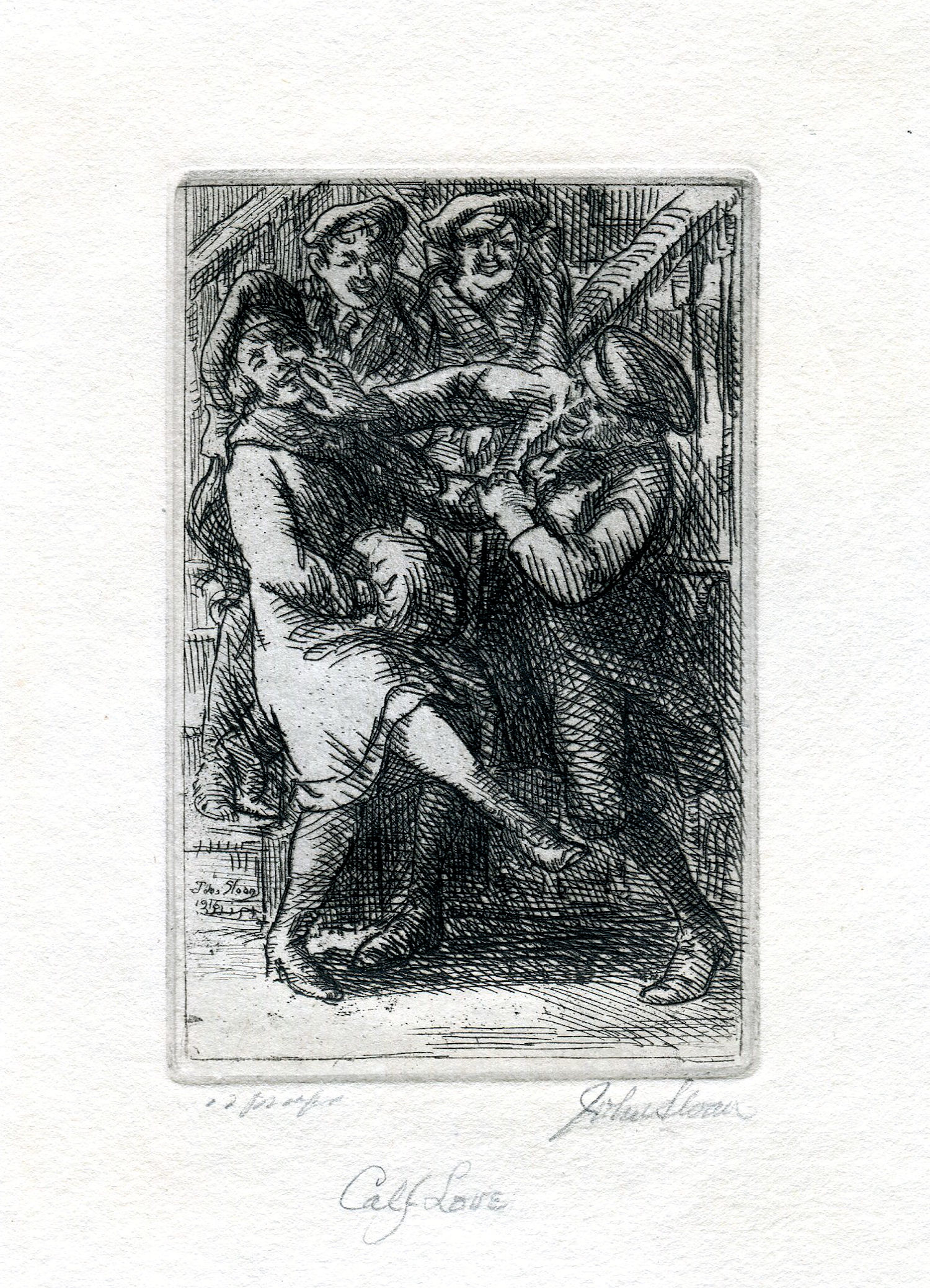
Calf Love
Etching on wove paper, 1916; stated edition of 100. Image size 2-5/8" x 4-1/8"; sheet size 6¾" x 8". Printed and signed by Ernest Roth in the lower left corner of the sheet; Titled, signed, and annotated "12 proofs" by Sloan in the lower margin.
In his diary, Sloan commented "Adolescent affection expresses itself in slaps and kicks and general rough handling" In another entry, he notes "Young girls of fifteen and sixteen and a little younger stand on the corners with the boys Sunday evening - a sort of rough and ready love making goes on, something like the play of animals; a smack in the face expresses the warmest regard."
A fine impression, with slight adhesive residue above the plate mark recto and paper loss on upper portion of the sheet verso; both flaws are well away from the sight area.
$1,200
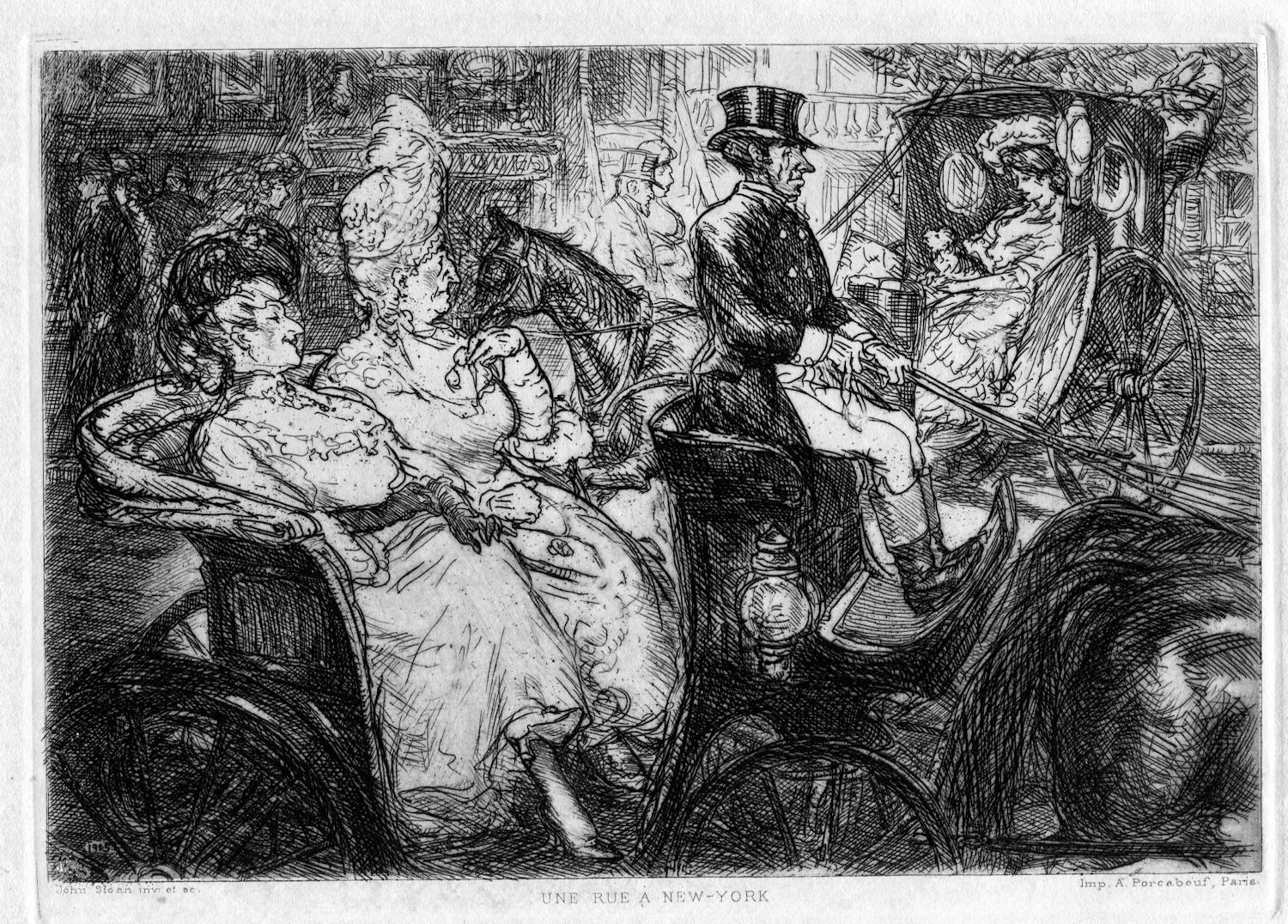
Fifth Avenue Critics (Une Rue À New-York)
Etching, 1905; ca. 3000 Image size 6-7/8” x 4-7/8”; sheet size 10¾” x 7-5/8”. Eleventh state, with added titles in the lower margin reading, from left to right “John Sloan inv / UNE RUE À NEW-YORK / Imp. A Porcabeuf, Paris” and printed using the steel-faced plate in the Gazette des Beaux-Arts, Paris and published in October, 1909. A very good impression in very good condition. Morse 128.
$425

Carlotta's Indecision (Jewelry Store Window)
Etching, 1906; In addition to the standard edition of 100, this plate was steel faced and was used to print the frontispiece for Canzoni, a book of Italian and Irish dialect poems by T. A. Daly, initially published by Catholic Standard & Times Publishing Co., Philadelphia, and subsequently by Harcourt, Brace & Howe, New York. Image size 3-5.8” x 5½”; sheet size 4-1/8” x 6-5/8” Overall very good condition, with a dampstain in the left margin not affecting the sight area. Morse 140.
$325
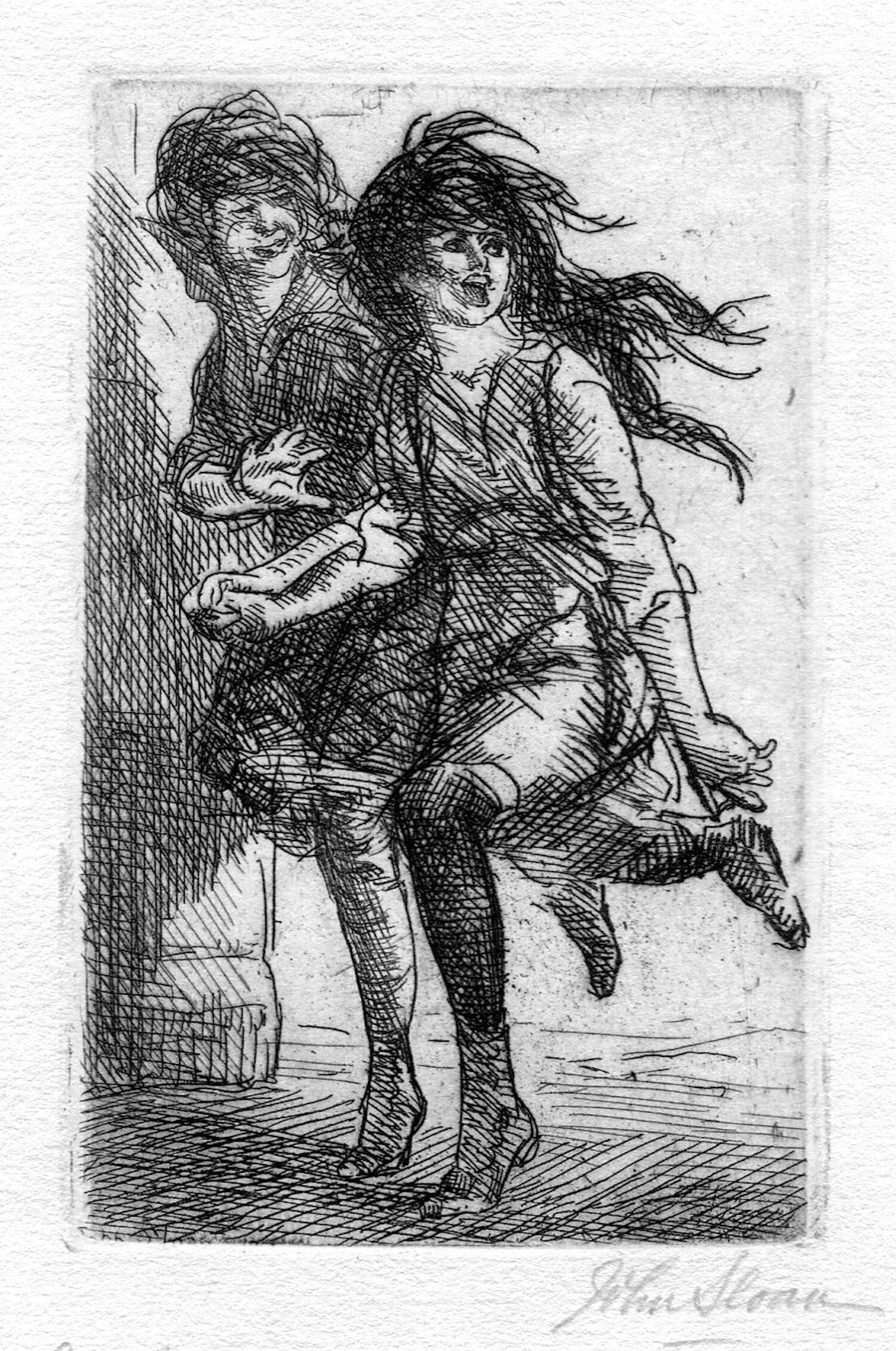
Girls Running
Etching, 1914, second state; edition of 100. Image size 2-3/8” x 4-5/8”; sheet size 9-5/8” x 11-1/8”. A nicely inked impression in fine condition on a wove sheet with pin holes around its periphery, undoubtedly the result of longer brads than required for framing. In the artist’s words, “This plaate is another arising from my love for untamed womanhood. Made from reality because made from memory, like all of my city life etchings.” Morse 168.
$950
